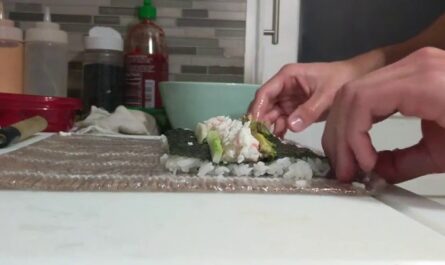If you are a sushi lover aiming to replicate that delightful restaurant-quality taste in your own kitchen, then understanding the sanitation tips for sushi tools is paramount. Keeping your sushi-making tools clean is vital not only for achieving the best flavors but also for ensuring food safety. Whether you are a seasoned home chef or new to the art of sushi, these sanitation guidelines will enhance your culinary experiences.

Why Cleanliness is Key in Sushi Making
Cleanliness is a significant aspect of sushi preparation. With raw fish being a staple component of many sushi dishes, ensuring your tools are spotless mitigates the risk of foodborne illnesses. It’s essential to comprehend that unclean tools can harbor bacteria, which can taint your ingredients and affect the taste of your sushi.
Understanding Sushi Tools Essentials
Before we delve into the sanitation tips, let’s identify the common tools you’ll be using:
Bamboo Mats
Your bamboo mat, or makisu, is a crucial tool for rolling sushi. Dirt and bacteria can easily hide between its strips, making proper cleaning essential. More about maintaining bamboo mats can be found here.
Knives
A sharp knife, typically a Yanagiba, is necessary for cleanly slicing fish. The blade must be pristine to ensure precise cuts.
Hangiri
The wooden hangiri is used to cool and flavor sushi rice. Its porous surface requires frequent and thorough cleaning. Check tips for its use here.
Effective Sanitation Techniques
Regularly Inspect and Clean Your Tools
After every use, carefully inspect your tools for any residue. Use hot, soapy water and a soft scrubber to clean them. Rinse thoroughly to remove any soap residue. Be particularly attentive to hard-to-see areas that might hide food particles.
Sanitize with Vinegar or Bleach
After cleaning, sanitize your tools using a vinegar solution or a mild bleach solution. This step is critical to killing any bacteria. Ensure tools are rinsed well afterward, especially knives and the bamboo mat. For more traditional methods, visit this guide.
Drying and Storing Tools Properly
Ensure all tools, especially those made from wood like hangiris, are completely dry before storing. Moisture can lead to mold growth and damage the tools longevity. Store tools in a dry area to prevent exposure to humidity.
Additional Tips for Sushi Tool Care
Use Food-Safe Oils
Occasionally, coat wooden tools with food-safe mineral oil to maintain their condition and prevent cracking.
Avoid Dishwasher Use
Sushi tools are best washed by hand. Dishwashers can be harsh, especially on items like bamboo mats, degrading them over time.
Consider Tool Maintenance
Routine maintenance like sharpening your knives and oiling wooden surfaces are crucial for keeping your tools in top shape.
Replacements When Needed
Tools will eventually wear out. Don’t hesitate to replace them when necessary to uphold cleanliness and efficiency.

FAQ Section
How often should I sanitize my sushi tools?
It’s recommended to sanitize your sushi tools after each use to ensure they remain germ-free and safe for next use.
Can I use a regular kitchen knife for sushi?
While regular knives can be used, a Yanagiba or a sushi knife is preferred for their design, which aids in precise cutting.
Should I oil my bamboo mat?
No, oiling your bamboo mat is generally unnecessary. Regular cleaning and thorough drying should suffice to maintain its condition.
For those aspiring to craft sushi at home, these sanitation tips for sushi tools will guide you to safer and tastier culinary adventures. By maintaining cleanliness, you protect yourself and your diners from potential health risks while elevating your sushi-making skills to new heights.
This article contains affiliate links. We may earn a commission at no extra cost to you.




